White Stork, Ooievaar, Weissstork, Cegonha-branca, Ciguena comun
Spotted on our property Monte Horizonte in the Alentejo Region of Portugal. White Stork sound
The White Stork (Ciconia ciconia) is a large wading bird in the stork family Ciconiidae, breeding in the warmer parts of Europe (north to Estonia), northwest Africa, and southwest Asia (east to southern Kazakhstan). It is a strong migrant, wintering mainly in tropical Africa, down to the south of South Africa, and also in the Indian subcontinent.
It is a huge bird, 100-125 cm (40-50 in.) tall, with a 155-200 cm (61-79 in) wingspan and a weight of 2.3-4.5 kg (5-10 lbs). It is completely white except for the black wing flight feathers, and its red bill and legs, which are black on juveniles. It walks slowly and steadily on the ground. Like all storks with the exception of the Leptoptilos genus, it flies with its neck outstretched.
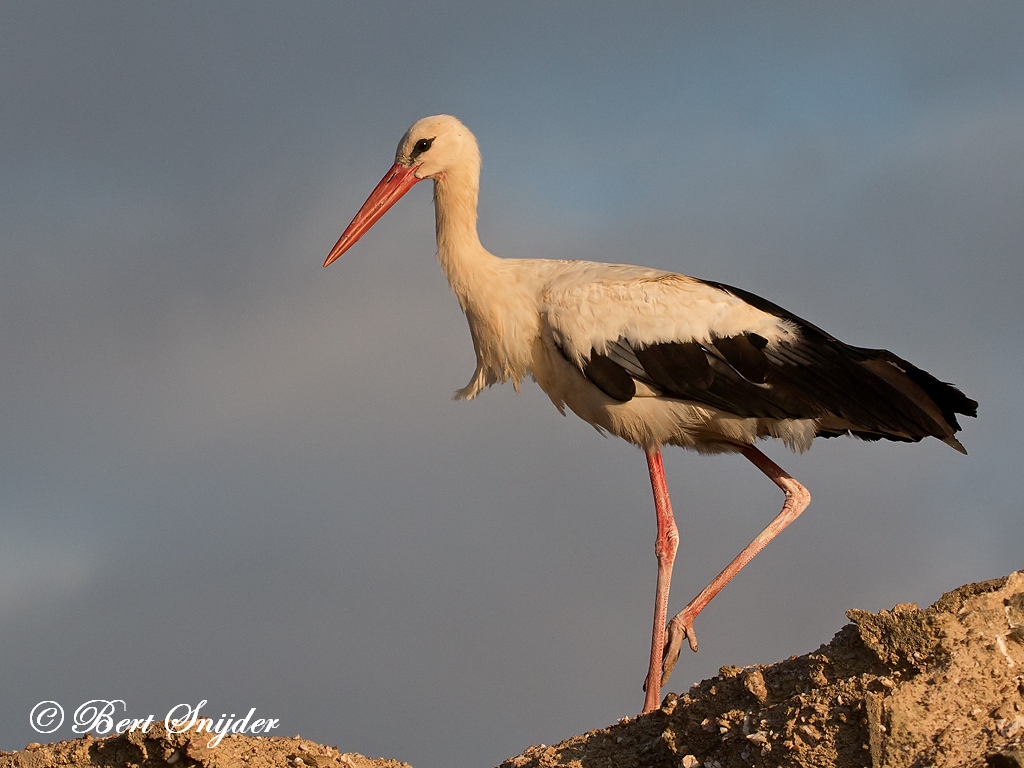
More photos at the bottom of this page.
Notable breeding totals occur mainly in central and eastern Europe, with 52,500 pairs in Poland (6th International Census of White Stork, 2004), 12,000-18,000 pairs in Ukraine, 10,500-13,000 pairs in Belarus, 10,000 pairs in Lithuania, the highest known density of this species in the world, and 8,500 pairs in Latvia. In Estonia the population is also increasing ca. 4000 pairs in 2004. In Germany, 3,000 of the total 3,400 pairs are in the former East Germany. There also exists a consistent number of pairs in Romania. In southwestern Asia, Turkey has the highest population, with 15,000-35,000 pairs. Apart from Spain (14,000 pairs) and Portugal (ca. 10,000 pairs in 2008), numbers in western Europe are much less healthy, with the once sizable Danish population declining to just five pairs in 1995, while re-introductions of zoo-reared birds have halted declines in Italy (30 pairs), the Netherlands (9-12 pairs), and Switzerland (120-160 pairs). A few pairs also breed in South Africa, recent colonists from within the normal wintering population (HBW). North of the breeding range, it is a passage migrant or vagrant in Finland, Great Britain, Iceland, Ireland, Norway, and Sweden, and also west to the Azores and Madeira. Data (except Poland and South Africa): Snow & Perrins 1998.
Threats to the species include the drainage of wetlands and other agricultural intensification, collisions with overhead power lines, use of persistent pesticides (such as DDT) to combat locusts in Africa, and (largely illegal) hunting on passage and the wintering grounds (HBW). Some birds, known in German as Pfeilstorch (“arrow storks”), have been found in Europe with African arrows embedded in their bodies.
The White Stork is one of the species to which the Agreement on the Conservation of African-Eurasian Migratory Waterbirds (AEWA) applies.
Close-up of head and neck (captive bird)White Storks rely on movement between thermals of hot air for long distance flight, taking great advantage of them during annual migrations between Europe and Sub-Saharan Africa. The shortest route south would take them over the Mediterranean, but since thermals only form over land, storks take a detour. The options are limited, because to the east lies the Arabian Desert, where it is difficult to find food and water – and to the west lies the Atlantic Ocean. This leaves two narrow migration corridors: eastern storks cross the straits of Bosporus to Turkey, traverse the Levant (Syria-Lebanon-Israel-Palestine), and then bypass the Sahara Desert by following the Nile, while western ones fly through the straits of Gibraltar. Either way, the storks can get help from the thermals for almost the entire trip and thus save energy.
White storks breed in open farmland areas with access to marshy wetlands, building a stick nest in trees, on buildings, or special platforms. Because it is viewed as bird of good luck, it is not persecuted, and often nests close to human habitation. In southern Europe, storks’ nests can be seen on churches and other buildings. It often forms small colonies. Like most of its relatives, it feeds on fish, frogs and insects but also eats small reptiles, rodents and smaller birds.
The white stork is almost silent except for the noisy mutual bill-clattering when adults meet at the nest.
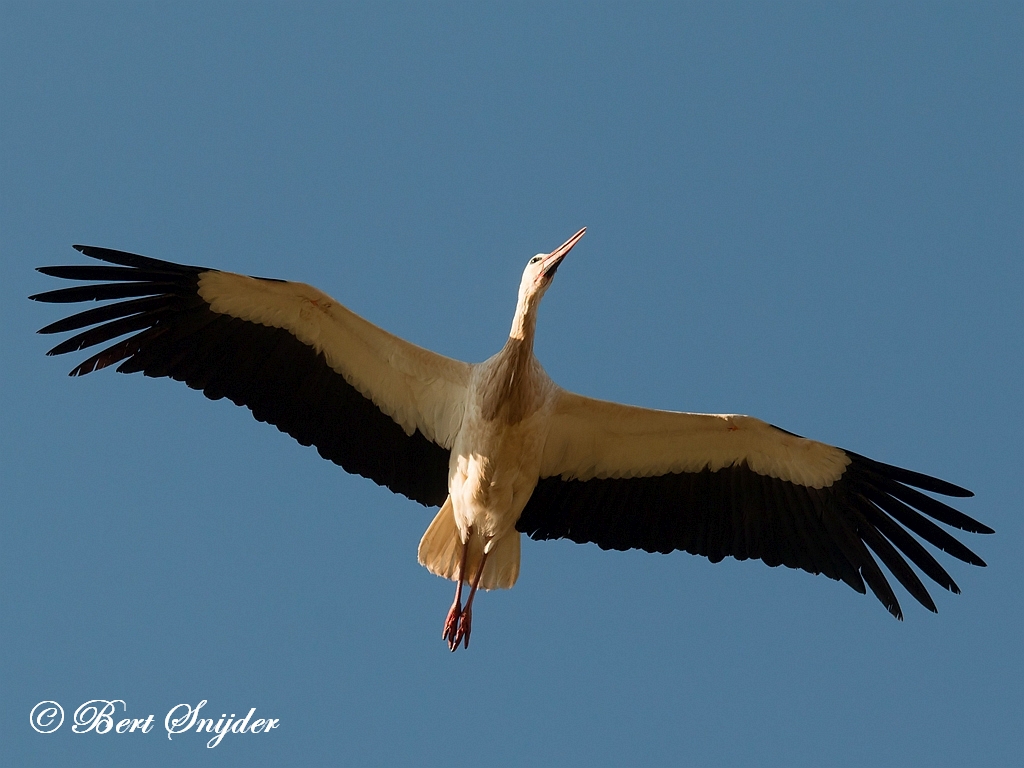
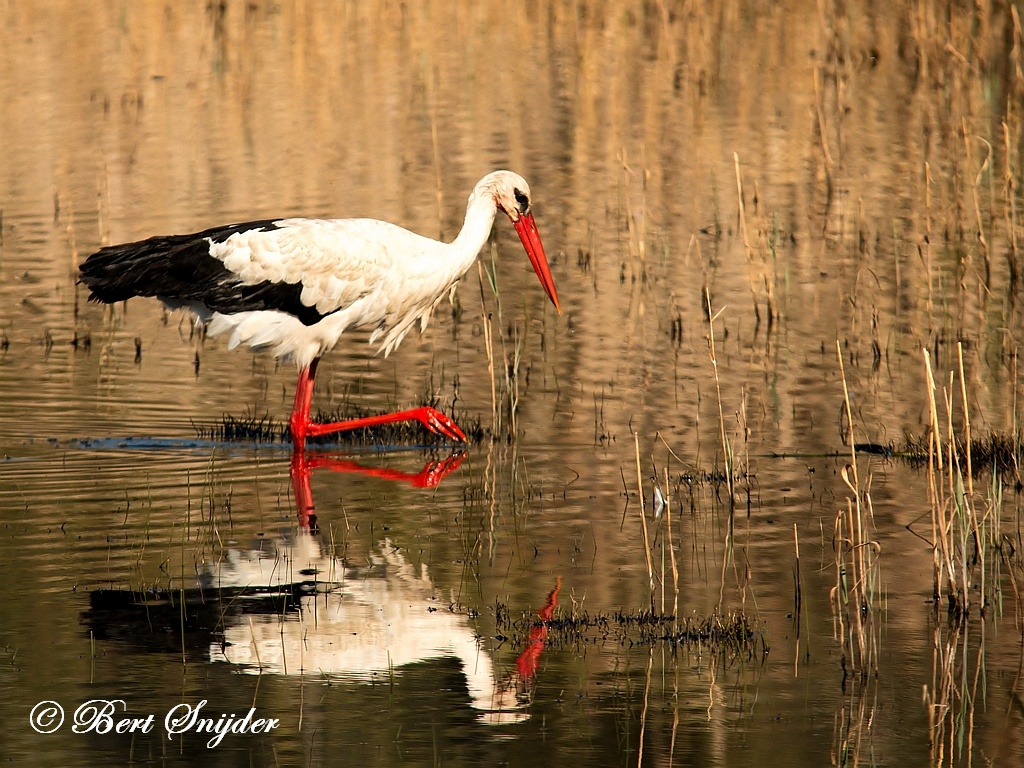
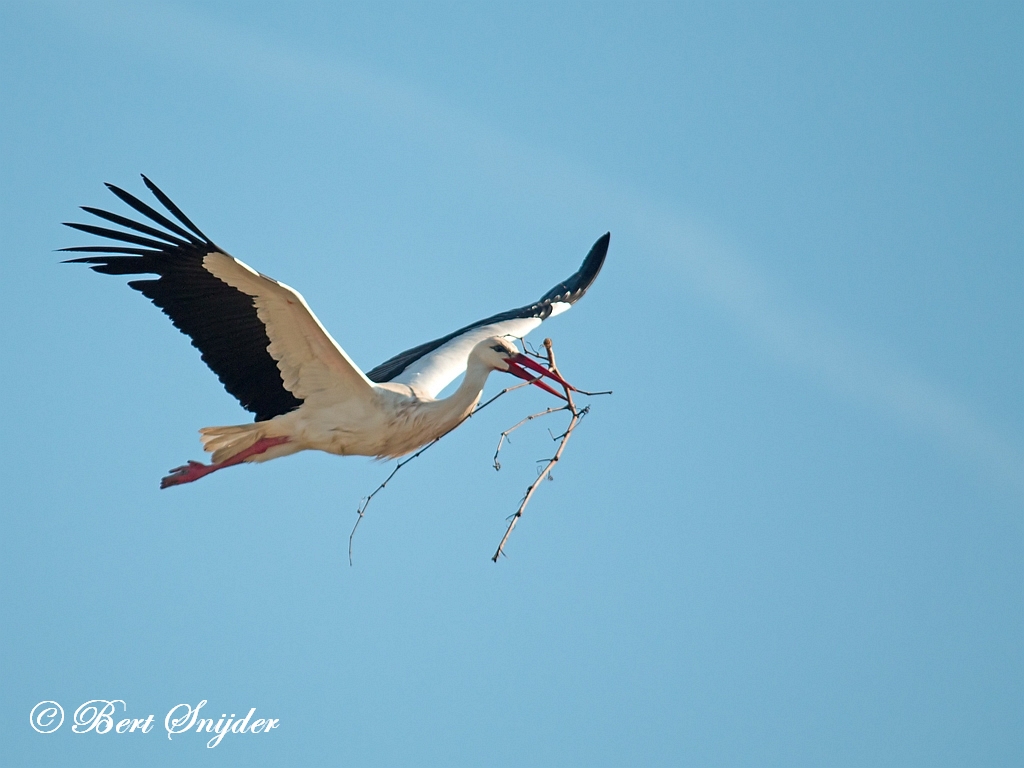
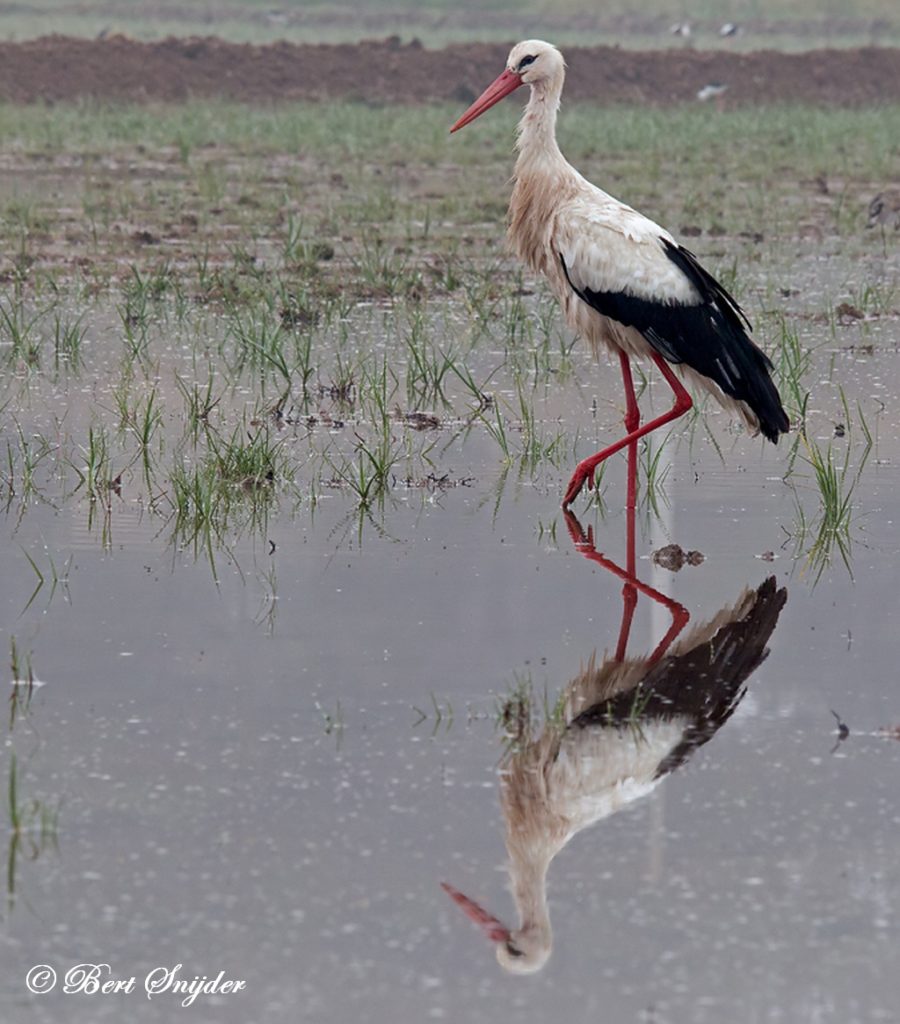
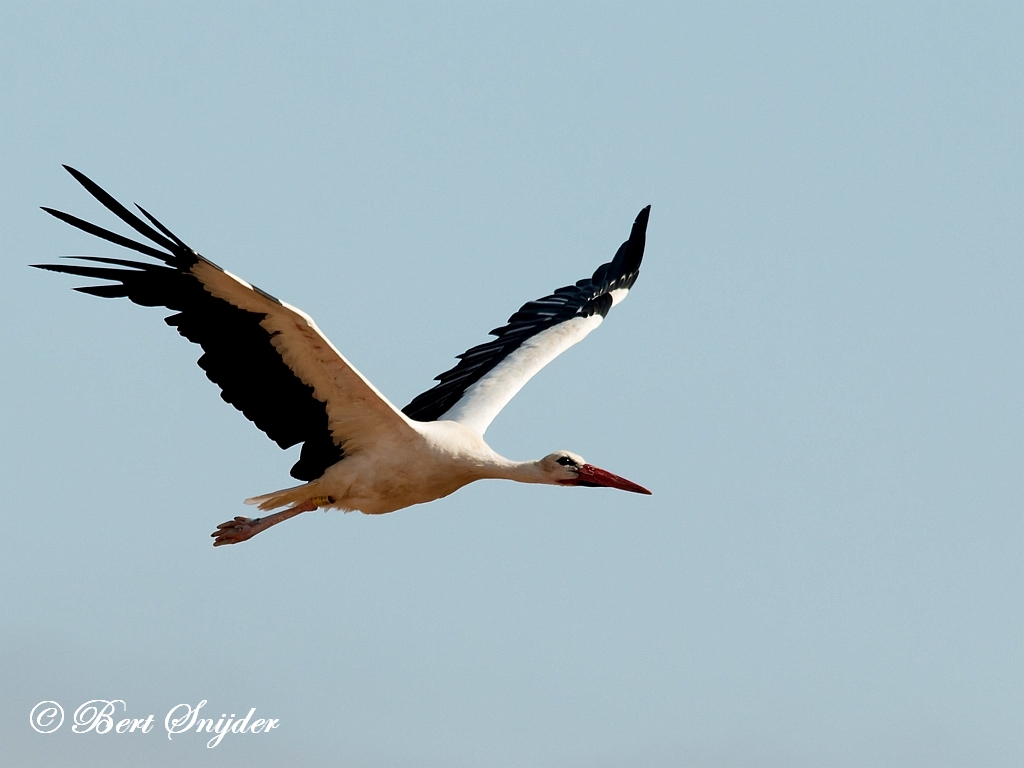
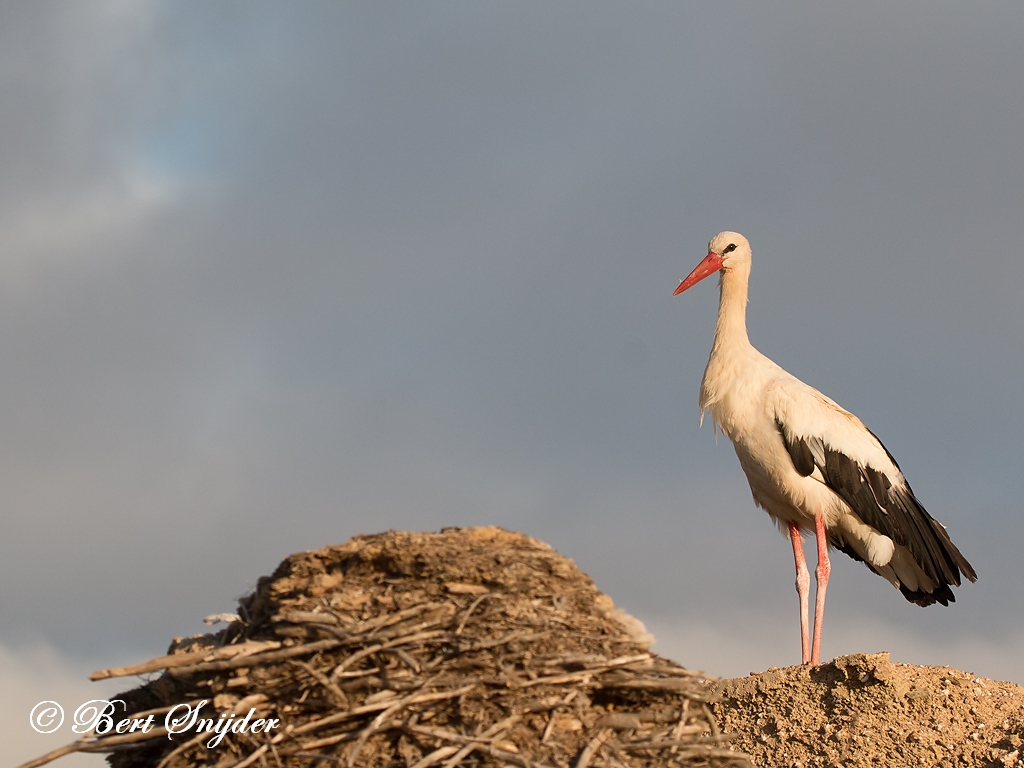
Other synonyms:
Afrikaans: Witooievaar
Asturian: Cigoña, Cigoña Cande
Breton: Ar c’hwibon gwenn
Catalan: Cigonya, Cigonya blanca
Catalan (Balears): Cigonya
Czech: Cáp bílý
Welsh: Ciconia gwyn
Danish: Hvid Stork, Stork
German: Weißstorch
English: European White Stork, White Stork
Esperanto: Blanka cikonio
Spanish: Cigúeña blanca, Cigüeña Blanca, Cigueña común, Ciguëña común, Cigüeña Común, Giguëña común
Estonian: Valge-toonekurg
Basque: Amiamoko zuria, Cigonya blanca
Finnish: Kattohaikara
Faroese: Storkur
French: Cigogne blanche
Irish: Storc Bán
Gaelic: Corra Bhàn
Galician: Cegoña branca, Cigonya blanca
Hungarian: Fehér gólya
Icelandic: Hvítstorkur
Italian: Cicogna bianca
Japanese: Konotori, kounotori, shubashikou
Cornish: Hwibon wynn, Whybon wyn
Kwangali: Nkumbinkumbi
Latin: Ciconia ciconia
Lithuanian: Baltasis gandras
Dutch: Gewone Ooievaar, Ooievaar
Norwegian: Stork
Sotho, Northern: Leakaboswana le Lešweu
Polish: bocian bialy
Portuguese: cegonha branca, Cegonha-branca
Romansh: Cicogna alva
Northern Sami: Vilgesháigir
Slovak: Bocian biely
Slovenian: bela štorklja
Albanian: Lejleku
Serbian: Bela roda, bijela roda
Sotho, Southern: Mokoroane
Swedish: Vit stork
Swahili: Korongo Mweupe
Tswana: Lekôlôlwane
Turkish: Beyaz Leylek, Leylek
Tsonga: Gumba
Zulu: uNogolantethe
Travel Birdwatching Holiday Alentejo, Vacation Portugal for birders guided birdwatching Tours and Trips.